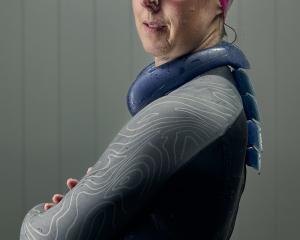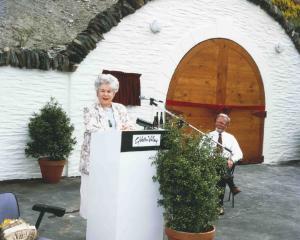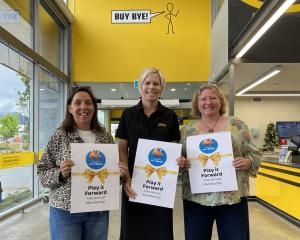Cardrona singer-songwriter Martin Curtis had been entertaining school children with kea stories for years before he learned about the Kea Conservation Trust and its drive to save the endangered bird.
Then, earlier this year, a trust member approached Mr Curtis following a recital of his Tale of Two Keas.
A film of his performance is now destined for the trust's website and Mr Curtis is also supporting the trust's lead-nail replacement programme this week by carrying out roof maintenance at the New Zealand Alpine Club's 79-year-old Cascade hut in the West Matukituki Valley.
Scientists say the birds eat the soft lead nails, which is a problem, as lead is toxic to the birds.
Recent tests on the Mt Aspiring National Park population by an Otago University student returned normal blood tests, but the trust says it is important to act rather than wait for birds to die.
Keas were hunted until protective laws were passed in the 1980s. Just 5000 are said to exist in the world - all in the South Island - and the trust believes numbers are reducing.
"I just think they are wonderful birds. They've supposedly been proved by scientists to be the most intelligent bird in the world. You can see it in their faces, thinking 'What can I do now'," Mr Curtis said.
His poem tells of the experience of a climber who banged a broom on a hut ceiling to quieten two keas on the roof. The birds then dangled upside down and peered through the window to check on the commotion inside.
While Mr Curtis believes few keas now visit the Cascade hut, the Department of Conservation has noticed a new gang of trouble-making juveniles at the nearby Aspiring hut, where they enjoy chewing on bicycle tyres or setting off stoat traps.
The inquisitive native parrots also try to steal from tourists at Rob Roy Glacier.
Doc biodiversity ranger Flo Gaud said while Mt Aspiring keas seemed unaffected by lead, birds at Mt Cook and Arthurs Pass had been poisoned. The reasons why were not entirely clear but Doc and the Kea Conservation Trust had decided to work together to replace old nails in all South Island tramping huts.
Wanaka Placemakers donated the new nails being used by Mr Curtis and his fellow roofer, Kenny Lang.
"In all the new huts, there are no more lead nails whatsoever... what Martin is doing is amazing. I hope if any other people are keen to do something similar, they contact the Kea Conservation Trust," Ms Gaud said.
People could also help by not feeding keas, taking all rubbish away so keas do not eat it and be alert to kea-thieving.
"Chocolate is especially very toxic for the kea and people may not realise this... Any kind of human food shouldn't be given to the birds. Because they are so curious and inquisitive you have to be very careful that they don't take something off you."












